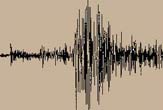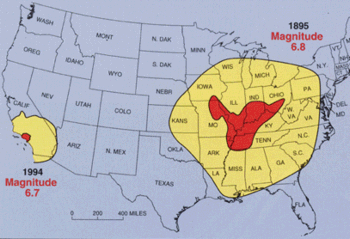New Fault Raises Threat of Eastern Earthquakes

A newfound earthquake fault in Arkansas could eventually be the site of a major earthquake that would rock much of the south and east, according to news reports. A major gas pipeline is said to be near the fault and at risk.
The alarm bell is similar to many sounded in recent years.
In August, scientists said the New York City area is at "substantially greater" risk of earthquakes than previously thought. The Indian Point nuclear power plants, 24 miles north of the city, sits astride the previously unidentified intersection of two active seismic zones, the researchers noted.
In general, geologists warn that large earthquakes are rare East of the Rocky Mountains, but they do occur and are bound to prove devastating.
The threats are real, but the timing is impossible to predict.
The newfound fault is about 100 miles east of Little Rock, according to The Associated Press. It is separate from the New Madrid fault that caused a series of devastating earthquakes in 1811 and 1812, all centered in Mississippi Valley.
A handful of roughly magnitude 5 quakes, considered moderate, have been triggered by the New Madrid fault network in recent years, and scientists say it's only a matter of time before another major one strikes that zone.
Sign up for the Live Science daily newsletter now
Get the world’s most fascinating discoveries delivered straight to your inbox.
Finding a fault
The new fault was found in fertile soil where liquefied sand bubbles up through cracks, according to Haydar Al-Shukri, the director of the Arkansas Earthquake Center at the University of Arkansas at Little Rock. The fault has been the site of at least one magnitude 7 temblor and could cause another, Al-Shukri said.
Earthquakes that size could prove devastating for the region, more so than out West. Here's why: Sandy soil common to the region can liquefy during a quake. The effects of this liquefaction, as it is called, were starkly evident in low-lying areas near San Francisco Bay in the 1989 Loma Prieta earthquake. Along with other differences in geology east of the Rockies, earthquakes there pack more potential for damage and are felt over a much wider region than western temblors.
The New Madrid quakes in the early 1800s, for example, were felt from the Rockies to Boston.
Also, many structures in the Midwest, East and South are not as well designed as those in the quake-prone West. Buildings in the New Madrid fault region constructed before modern building codes were put in place typically are not retrofitted, as is common in California.
New Madrid power
The largest of three or four big seismic events that stretched from December 1811 to February 1812 is called the New Madrid Earthquake and had an estimated 8.0 magnitude, strong enough to cause the nearby Mississippi River to temporarily flow backward.

Its epicenter was in the town of New Madrid in southeast Missouri, near the Kentucky and Tennessee state lines. Hundreds of aftershocks followed for several years.
The damage from the New Madrid quake was bad enough in the early 19th century—half of the town was destroyed, but with many more people and buildings now in the area, a similar event in the region today would be devastating, seismologists and engineers agree.
It is not possible, however, to make specific predictions of when a large earthquake might strike. The odds of another 8.0 event within 50 years in the New Madrid zone are between 7 and 10 percent, geologists said in 2005.
Northeast Threat
Other parts of the East have more faults than previously thought, too. Though they have not been active in perhaps a thousand years or more, faults in upstate New York, found in 2000, nonetheless have the potential to generate large events.
History shows what even moderate quakes can do in the East.
A 5.0 temblor in 1737 knocked down chimneys in New York City and was felt from Boston to Philadelphia. A magnitude-5.5 quake in 1884 did similar damage in a wider region around New York. Another quake in this range struck in 1783.
Based on history, researchers say quakes at least 5.0 in magnitude should be expected, on average, about every 100 years.
"Today, with so many more buildings and people, a magnitude 5 centered below [New York City] would be extremely attention-getting," says John Armbruster of Columbia University's Lamont-Doherty Earth Observatory. "We'd see billions in damage, with some brick buildings falling. People would probably be killed."
Robert Roy Britt is the Editorial Director of Imaginova. In this column, The Water Cooler, he takes a daily look at what people are talking about in the world of science and beyond.
Robert is an independent health and science journalist and writer based in Phoenix, Arizona. He is a former editor-in-chief of Live Science with over 20 years of experience as a reporter and editor. He has worked on websites such as Space.com and Tom's Guide, and is a contributor on Medium, covering how we age and how to optimize the mind and body through time. He has a journalism degree from Humboldt State University in California.










